The majestic beauty of black and white horse breeds has captivated equine enthusiasts for centuries. These visually striking creatures are not just color patterns on a canvas; they carry a rich tapestry of genetics, history, and culture. In this exploration, we delve into the world of piebald and skewbald horses, discover the charm of pinto horses, and examine the distinct patterns and characteristics that make black and white equines so unique. From the iconic Gypsy Vanner to the sleek Paint Horse and the lesser-known Magpie horses, we will uncover the allure that keeps these horses trotting proudly in the hearts of people around the globe.
Exploring the Intricacies of Equine Coloration
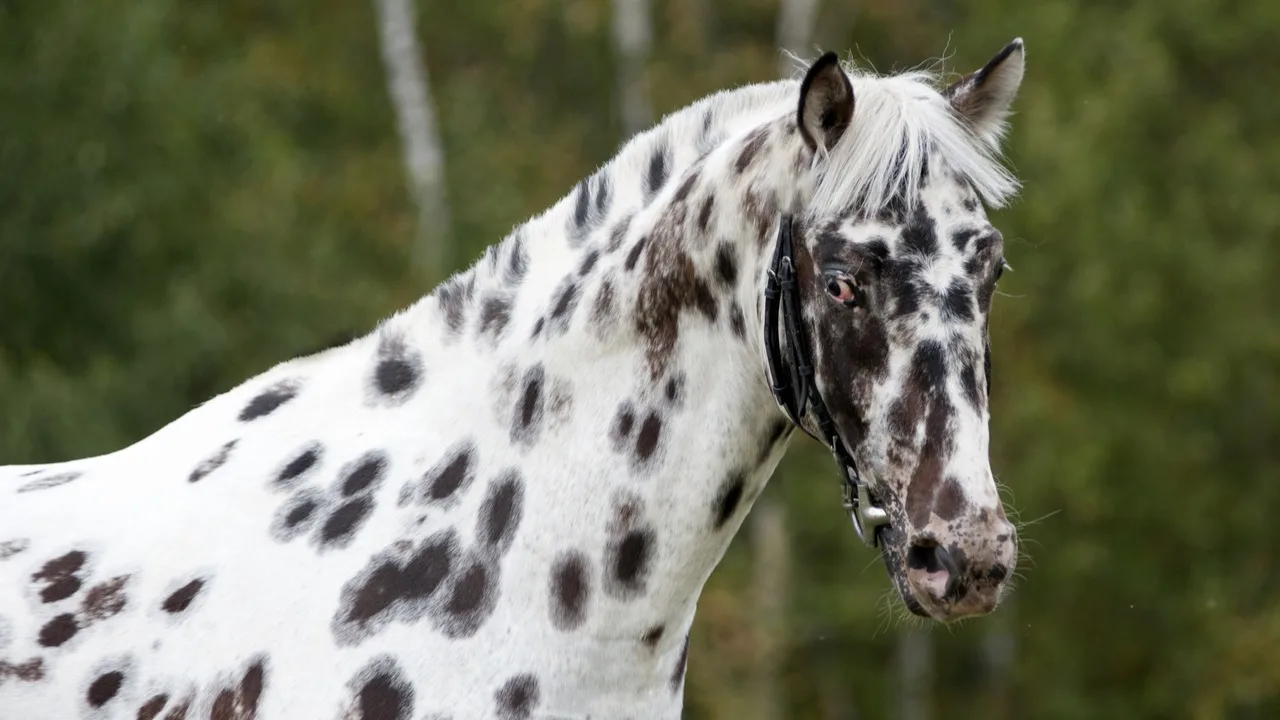
Black and white horse breeds hold a special place in the equine world, with their contrasting coats creating a stunning visual effect that resonates with many. This section aims to shed light on the intricate genetic factors, historical influences, and symbolic meanings that contribute to their unique appeal and widespread admiration.
Decoding the Genetics of Equine Coloration
Understanding the genetic intricacies that result in the distinctive coats of piebald and skewbald horses enhances our appreciation for these breeds. The inheritance of coat colors follows well-established genetic principles, which breeders utilize to perpetuate and celebrate the legacy of these intricate patterns.
Symbolic and Cultural Impact of Pinto Horses
- Representation: The pinto horse, with its unique coat patterns, is a symbol of beauty and strength in various cultural narratives.
- Historical Significance: Historically esteemed by Native Americans, the pinto horse has played a significant role in their culture and is often featured in indigenous art and lore.
- Influence on Art: The stark coat contrasts of pinto horses have been a source of inspiration across artistic mediums, influencing generations of artists.
Diverse Regional Appreciation
The preferences for piebald and skewbald horses can vary significantly by region, influencing their use in ceremonial events and their status within communities. Their prominence in various societies highlights their adaptability and significance beyond mere aesthetics.
Variability and Uniqueness within Breeds
Even among black and white horse breeds, there is a remarkable range of pattern expression, which underscores the individuality of each horse. This variability showcases the diverse beauty of these equines and emphasizes their role as living art forms.
Diverse Roles in Equine History
Throughout history, the roles of black and white horse breeds have been as diverse as their patterns. They have served as symbols of power, utility in work, and emblems of status. Their historical significance has evolved, yet their impact and the reverence they command persist in modern times.
The enchantment of black and white horse breeds lies not only in their striking appearance but also in the complex genetic makeup, historical roles, and cultural symbolism they embody. The captivating patterns of piebald and skewbald horses, along with the varied pinto horses, hold a revered place in the hearts of enthusiasts and continue to inspire admiration across cultures and disciplines.
Diving Deeper into the Elegance of Distinctive Equine Breeds
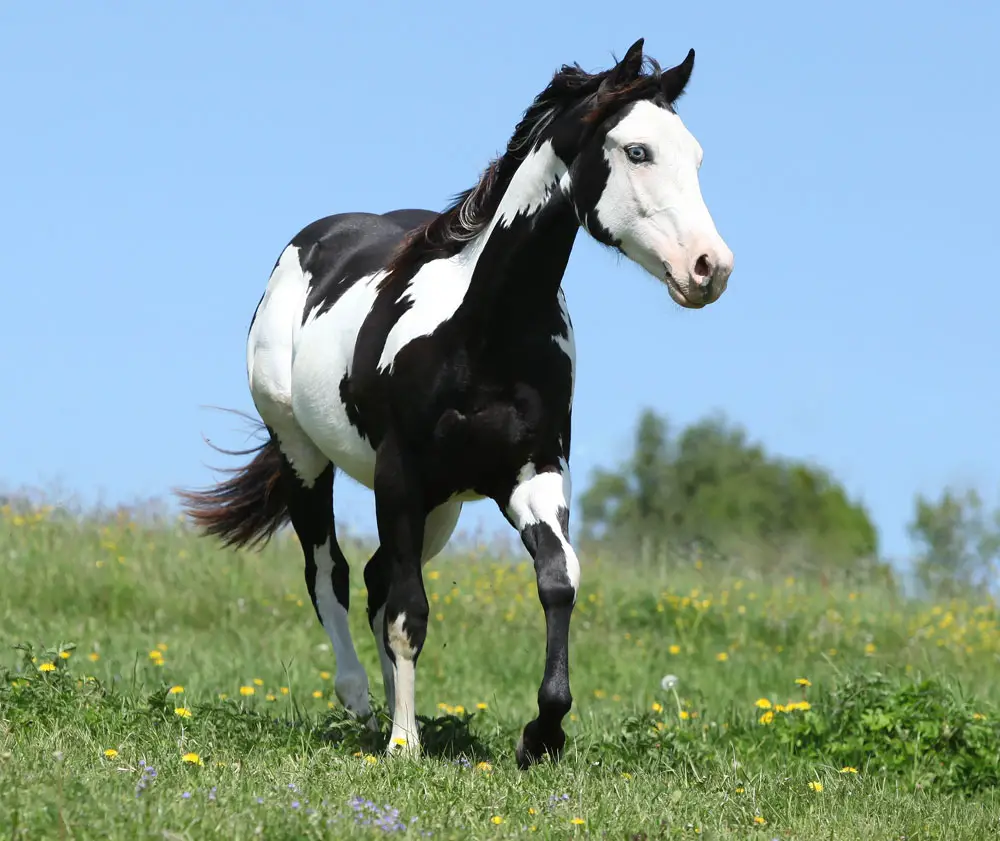
Delving deeper into the realm of equine majesty, we focus on the distinct traits and origins that distinguish specific breeds like the Gypsy Vanner, Paint Horse, and the unique Magpie horses. Each breed showcases its own story, contributing to the intricate mosaic of the equestrian world with their individual qualities and the roles they’ve adapted in various disciplines.
Tracing the Roots and Evolution of the Gypsy Vanner
- Historical Origins: Explore the Gypsy Vanner’s journey from its beginnings with the Romani travelers to its current status as a versatile and beloved breed.
- Selective Breeding: Delve into the breeding practices that have preserved the breed’s notable feathering and distinct piebald coat.
- Contemporary Adaptations: See how the Gypsy Vanner has transitioned from a draft to a multipurpose horse, suitable for families and show rings alike.
Understanding the Unique Heritage of the Paint Horse
- Lineage Exploration: Trace the Paint Horse’s ancestry back to its Spanish and indigenous origins and its role in American history.
- Distinguishing Features: Learn about the specific color patterns that set the Paint Horse apart from other pinto breeds.
- Showcasing Agility and Intelligence: Discover the competitive edge and versatility of the Paint Horse across various disciplines.
Appreciating the Rare Beauty of Magpie Horses
- Distinctive Color Patterns: Explore the black and white distribution that gives these horses the ‘Magpie’ name.
- Significance in Equestrian Circles: Understand the rarity and exclusive status of Magpie horses among equine enthusiasts.
- Contribution to Equine Diversity: Recognize how Magpie horses enhance the spectrum of equine beauty with their striking patterns.
These breeds, each with a rich narrative and an array of characteristics, contribute to the spellbinding diversity within the equine kingdom. The interplay of lineage, purpose, and aesthetics in breeds like the Gypsy Vanner, Paint Horse, and Magpie horses underscores the breadth and depth of the equestrian world, captivating those who appreciate the beauty and spirit of these living works of art.
Discovering the Unique Patterns of Black and White Equines
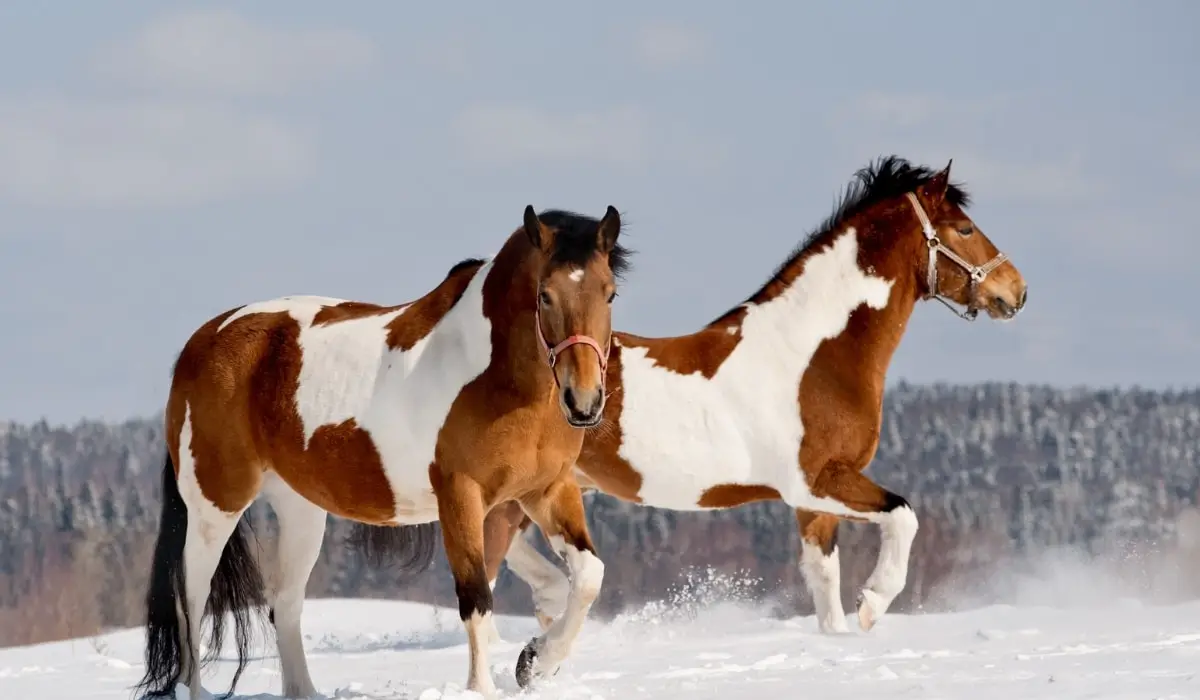
Among the diverse spectrum of equine coat patterns, the Tobiano and Overo designs stand out for their distinctive appearances and genetic origins. These patterns enhance the visual splendor of black and white horse breeds and captivate the admiration of enthusiasts worldwide.
Identifying the Tobiano Pattern
The Tobiano pattern is easily recognized by its regular and balanced markings. To appreciate the Tobiano’s unique traits:
- Spots have smooth, rounded edges, offering an aesthetic of symmetry.
- Markings often extend across the horse’s back, enveloping the neck and chest.
- The horse’s head features traditional solid-colored horse markings.
- Legs frequently display white coloration, independent of body patches.
- A two-toned tail often reflects the horse’s piebald appearance.
The Intricacies of the Overo Pattern
The Overo pattern is celebrated for its irregular and dramatic flair. Features that define the Overo pattern include:
- Uneven, jagged edges reminiscent of an impromptu brush stroke.
- White markings often asymmetrically adorn the horse’s flanks and may rise towards the neck.
- Extensive head markings are common, at times covering the entire face.
- Blue eyes are more frequently observed in horses with this pattern.
- Dark pigmentation surrounding the ears and muzzle often creates a distinctive “mask.”
Additional Patterns Beyond the Commonly Known
While Tobiano and Overo are prominent, black and white horse breeds may present other captivating patterns:
- The Tovero Pattern: This pattern merges Tobiano and Overo traits for a unique and varied appearance.
- The Sabino Pattern: Sabino horses possess a roan-like aesthetic with white markings edged in ticking, often with intricate borders.
- The Splashed White Pattern: Characterized by clear, horizontally oriented white markings, it appears as though the horse has been dipped in white paint.
These distinct patterns are inherited through specific breeding lines, adding to the breed’s genetic diversity and fascination.
Patterns as a Means of Identification
Comprehending these patterns not only enriches the appreciation for the breeds but is also essential for accurate identification and breed registry. It plays a significant role in breed associations and competitive equine events:
- Genetic testing can confirm the presence of particular coat pattern genes.
- Breed registries often require detailed descriptions and imagery of a horse’s unique markings.
- Pattern classifications may influence eligibility for specialized events in horse shows.
The elegance embodied by black and white horse breeds, whether exhibiting Tobiano or Overo patterns, remains a source of fascination in the equine world. These patterns not only contribute to the individuality and beauty of the horses but also play a part in their identification and classification within the equine community.
Inspiring Black and White Horse Names
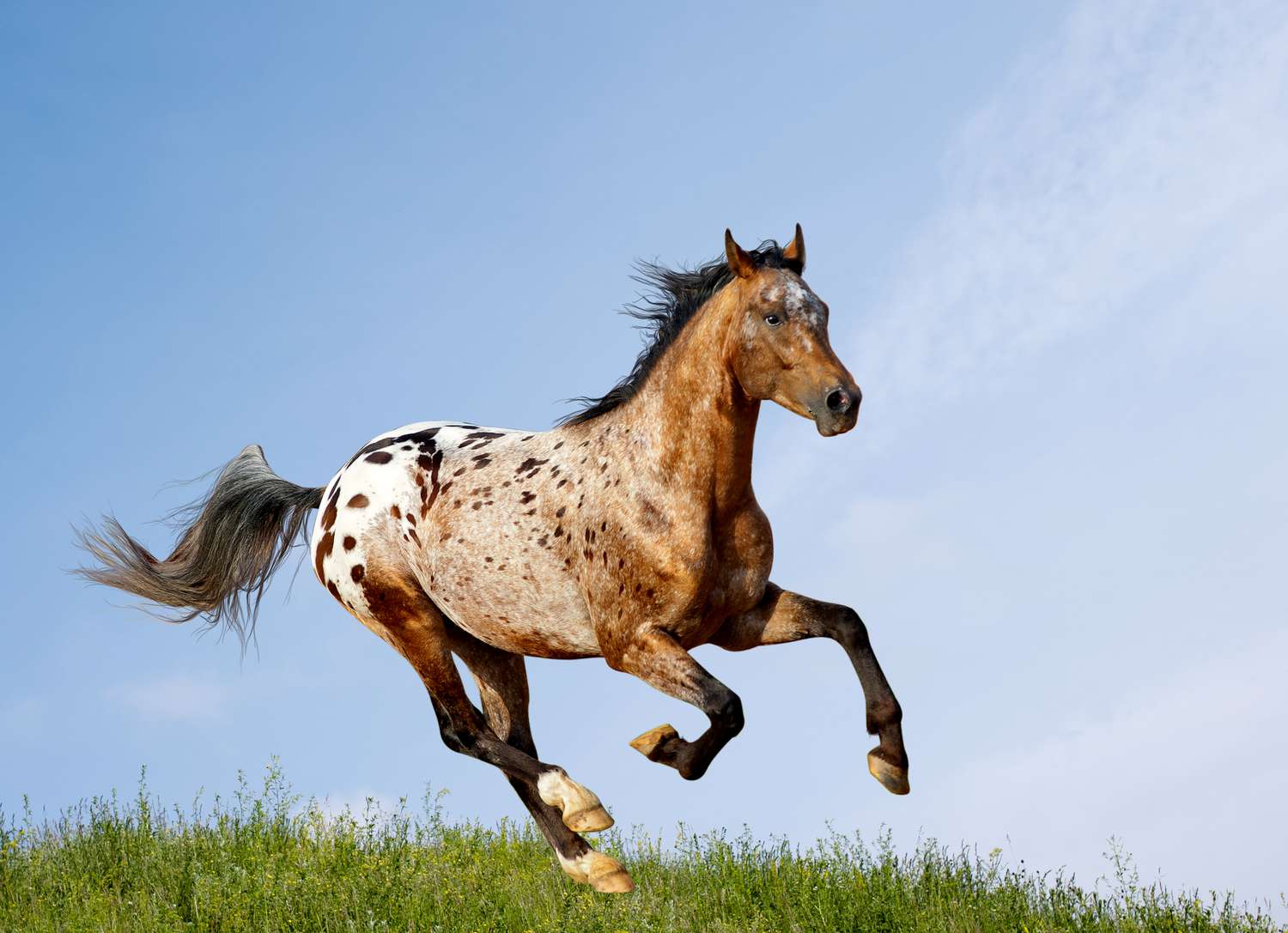
Selecting a name for a horse is not just about its appearance; it’s a reflection of its character and the bond it shares with its owner. For those with black and white horses, their remarkable coat patterns provide a rich source of inspiration for naming. Drawing on elements from the environment, storied myths, the night sky, and the arts, there’s a wealth of possibilities to find that perfect name that resonates with both the horse and the owner.
Drawn from the Environment
The natural world, replete with its contrasts and spectacles, offers timeless inspiration for naming these equine companions:
- Panda: Emblematic of the gentle giant with a similar color scheme.
- Domino: For the horse with markings reminiscent of the classic game pieces.
- Storm: Capturing the dynamic essence of a stormy sky in their coat.
- Puffin: A befitting name for a horse with a charming persona akin to the seabird.
- Birch: Reflecting the elegant pattern of bark on the birch tree.
Derived from Lore and Legend
The realms of myth and legend hold a treasure trove of names imbued with power and mystique, suitable for a horse of striking appearance:
- Phoenix: After the mythical bird that rises from its ashes, symbolizing renewal.
- Excalibur: The legendary sword of King Arthur, denoting strength and nobility.
- Artemis: Goddess of the moon and the hunt, reflecting a horse’s wild spirit and grace.
- Frost: A nod to the ethereal beauty of frost patterns, and for horses with a cool demeanor.
- Chimera: Named after the mythical creature composed of various animals, ideal for a horse with a distinctive coat.
Stellar and Cosmic Inspirations
The boundless night sky with its celestial bodies provides a plethora of names that capture the imagination and the contrasting hues of black and white horses:
- Neptune: For a horse with a majestic presence, named after the distant, icy planet.
- Halley: Inspired by Halley’s Comet, for a horse with a tail as striking as a comet’s trail.
- Orion: After the prominent constellation, suited for a horse with a strong, commanding presence.
- Vortex: Evoking the swirling motion of celestial phenomena, ideal for a horse with a dynamic pattern.
- Cosmo: A universal name that implies a vast and mysterious nature, just like the cosmos.
Artistic and Abstract Influences
The world of art and abstraction offers imaginative black and white horse names that celebrate uniqueness and the arts:
- Escher: After the artist famed for his mind-bending black and white sketches.
- Silhouette: For a horse whose profile is as striking as a silhouette against the sky.
- Monochrome: A sophisticated name for a horse with a coat that resembles a black and white photograph.
- Kaleido: Short for kaleidoscope, ideal for a horse with a mesmerizing pattern.
- Prism: Reflecting a spectrum of colors, suitable for a horse with a personality as vibrant as its coat is monochromatic.
Every black and white horse is an individual, and their name is an opportunity to highlight their distinctive traits and the joy they bring. Owners may find that a blend of observation, the horse’s individual quirks, and a touch of creativity will lead to a name that becomes a natural extension of their equine friend’s identity. Whether inspired by the earth, legendary tales, the vast universe, or the abstract, these names contribute to the charisma and stories that black and white horses carry with them.
Distinctive Features and Abilities of Black and White Equines
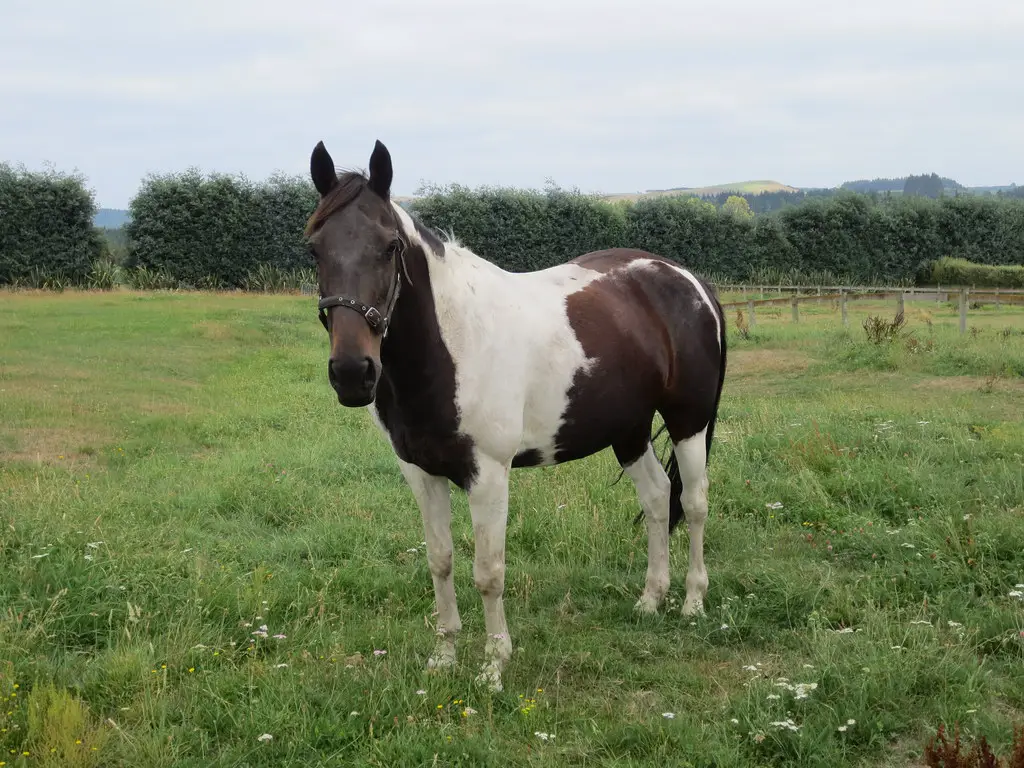
The splendor of black and white equines encompasses more than their striking appearance, extending to their individual traits and aptitudes. These horses possess qualities that enhance their compatibility with various equestrian activities and riders of different experience levels. This exploration delves into the behavioral nuances, physical features, and the remarkable versatility that define these breeds.
Behavioral Traits across Breeds
Black and white equines exhibit a wide range of temperaments, shaped by genetics, upbringing, and their environment. The Gypsy Vanner, for instance, is known for its gentle nature, making it ideal for those new to riding. In contrast, certain Paint Horses can display a lively spirit, aligning with their nimble performance in equestrian sports. Individual interactions are essential to truly understand and appreciate their distinct personalities.
Varied Physical Characteristics
The captivating color patterns of these horses are complemented by distinct physical characteristics suitable for various disciplines. From the robust Gypsy Vanner, with its trademark feathering, to the agile Paint Horse, each breed exhibits unique physical traits. The following features are notable among these breeds:
- Build: Ranging from the stocky Gypsy Vanner to the sleek Paint Horse.
- Coloration: The striking black and white coat is a defining aspect of these breeds.
- Eyes: Blue eyes can be a mesmerizing feature present in certain coat patterns.
Training and Versatility
Known for their adaptability, black and white equines excel in a multitude of equestrian sports. The Paint Horse, in particular, is renowned for its aptitude for learning, showcasing its talents in competitive arenas and beyond. Their trainability makes them suitable for a variety of disciplines.
Health Considerations and Care
While all horses require diligent care for their well-being, black and white breeds may face specific health challenges, such as susceptibility to skin conditions due to their pigmentation. Notably, Paint Horses can be affected by OLWS. Regular health assessments are vital for the prevention and treatment of such issues.
Diverse Roles and Compatibility
These equines fulfill roles that extend beyond their visual appeal. The placid Gypsy Vanner is adept at driving and therapeutic settings, while the agile Paint Horse thrives in Western events and recreational riding. Their diverse capabilities make them cherished among the equestrian community.
Collectively, the attributes of these breeds contribute to their esteemed status among horse enthusiasts. Their blend of beauty, intelligence, and strength endears them to riders and breeders, making them sought-after companions. Exploring the individual qualities of these horses can lead to a deeper understanding and appreciation of their grace and versatility.
Essential Care Strategies for Piebald and Skewbald Equines
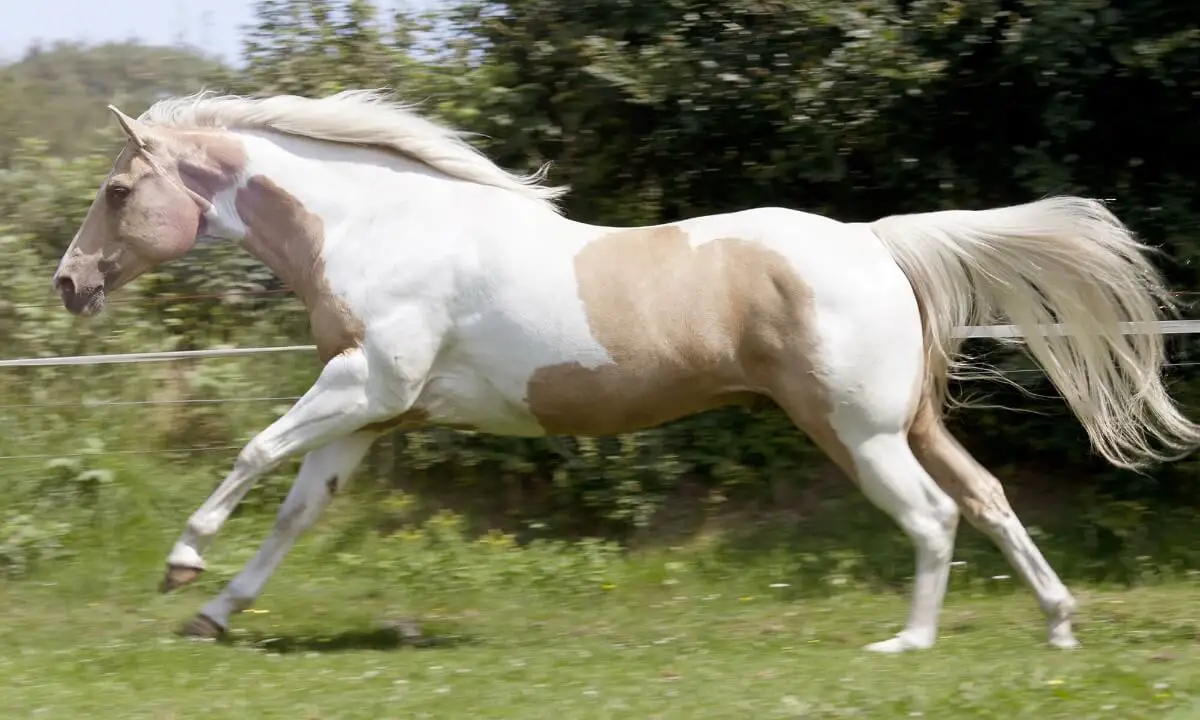
Maintaining the health and beauty of piebald and skewbald equines demands a dedicated approach to their care. Their distinctive coats necessitate special considerations in their daily management. This guide focuses on ensuring these equines’ well-being through specialized nutrition, grooming habits, and health monitoring.
Optimizing Nutrition for Unique Equine Needs
A balanced diet is crucial for the well-being of piebald and skewbald horses, just like any other equine. Their dietary plan should cater to their specific energy and health requirements, consisting of:
- Quality forage that forms the bulk of their intake.
- Additional concentrates to fulfill energy demands when forage alone is insufficient.
- Necessary vitamins and minerals, provided through enriched feeds or supplements.
- Constant access to salt for vital electrolyte balance.
Adjusting the diet based on age, activity level, and health status, with professional guidance, ensures these horses receive proper nutrition.
Specialized Grooming Techniques
Regular grooming is essential for the health and presentation of piebald and skewbald horses. Key grooming practices include:
- Daily brushing to eliminate dirt, paying extra attention to white areas prone to staining.
- Mane and tail maintenance to avoid matting and preserve their condition.
- Periodic washing with equine-formulated products to maintain coat health without over-drying.
- Frequent hoof care to prevent issues and support overall hoof integrity.
Consistent grooming not only enhances their appearance but also aids in the early detection of skin conditions or other health concerns.
Proactive Health and Wellness Measures
Particular health issues may arise in piebald and skewbald horses due to their unique pigmentation. Effective health management strategies include:
- Regular veterinary examinations to check for skin-related or other genetic conditions.
- Sun protection for areas of unpigmented skin susceptible to damage.
- Observation for symptoms of genetic disorders, such as OLWS in horses with Overo lineage.
Preventive care and collaboration with veterinarians help safeguard their health and longevity.
Fostering Physical Fitness and Comfortable Habitats
Ensuring regular physical activity is paramount for piebald and skewbald horses to promote their physical fitness and mental health. An exercise routine might involve:
- Ample turnout time in a secure area for free movement and social interaction.
- Diverse training exercises tailored to the horse’s discipline and training level.
- Engaging activities to maintain interest and prevent monotony.
Moreover, their living environment should be safe and conducive to their needs, with clean stabling, robust fencing, and shelters for protection against weather extremes.
Attending to Breed-Specific Needs
Owners should be cognizant of the particular requirements of various piebald and skewbald breeds. For instance, Gypsy Vanners need careful feather management to avert skin issues, and Paint Horses benefit from specialized coat care to keep their unique patterns in optimal condition. Customizing care practices to each breed ensures these horses remain healthy and spirited.
Symbolism and Representation in Media
The dynamic duo-tones of black and white horses have long resonated with audiences, making them compelling symbols in various cultural narratives. These equines are more than just visually engaging; they embody attributes of balance, harmony, and the struggle between good and evil. Their cultural depictions span from heroic steeds in ancient lore to modern-day icons of freedom and elegance.
On-Screen Appearances
When it comes to on-screen portrayals, these equines are a cinematographer’s dream. They enhance the visual storytelling in:
- Action-packed Westerns as they blaze across rugged landscapes, reflecting the untamed spirit of the frontier.
- Epic fantasies where their striking colors complement otherworldly settings.
- Period pieces that gain a touch of authenticity from these noble creatures.
Enduring Literary Motifs
In the pages of literature and the rich tapestry of myths, black and white horses symbolize an array of virtues. They are found in:
- Chivalric sagas where they carry knights into battle, epitomizing bravery and honor.
- Fabled tales where creatures like Pegasus capture the imagination with their distinct hues.
- Storybooks that ignite a passion for these majestic animals in young readers.
Inspiration in the Arts
The strong contrast of black and white equines has captivated artists across time, inspiring creations that range from classical to contemporary. Artistic representations feature:
- Soulful equine portraits that capture their essence in monochromatic elegance.
- Stylized interpretations that play with contrast and form.
- Statues and public art that pay homage to these equines’ historical roles.
Marketing and Consumer Products
The iconic patterns of black and white horses make them favorites in marketing and consumer products. They are emblazoned on:
- Apparel and accessories that cater to both equestrian fans and those with a flair for fashion.
- Collectibles and playthings that delight enthusiasts of all generations.
- Corporate emblems and mascots, embodying attributes of swiftness and liberty.
Influence on Digital Platforms
In the digital age, the allure of these horses thrives on social media, enchanting a global audience. Their presence is felt in:
- Photographic showcases that highlight their beauty and often achieve viral status.
- Video productions that range from personal equestrian journeys to informative series.
- Profiles of equine social media stars who inspire and engage a broad community.
Their enduring appeal in various forms of media underscores the multifaceted symbolism of black and white horses. As they continue to inspire and captivate, they remain timeless icons in our collective imagination.
If you’re curious about the various names and breeds of horses, you’ve come to the right place. For those specifically fascinated by horses with unique coat colors, we have informative articles that delve into the specifics. Discover the majestic beauty of ebony equines in our piece on what black horses are called, or explore the fiery allure of chestnut shades in our article about what red horses are called. And for those interested in the larger breeds, our article on what big horses are called will surely provide the grand details you’re seeking. Join us on a journey through the equine rainbow and enhance your knowledge of these stunning creatures!
Conclusion: The Beauty of Black and White Equine
In the kaleidoscope of equine colors, black and white horse breeds stand out with an undeniable allure. From the piebald and skewbald horses of the British Isles to the pinto patterns adorning American breeds, these horses are a testament to the diversity and splendor of the animal kingdom. As we continue to admire their striking patterns and delve into their individual stories, the fascination with these beautiful creatures endures, reminding us of the unique bond between humans and horses.
For more detailed information on black and white horse breeds, including the dramatic Appaloosa and the versatile American Paint Horse, enthusiasts can visit trusted sources that offer insights into the unique features and historical significance of each breed.



